by 蔡芳玲
For more than 100 years, Chi Ming Hall has been a sacred place for Confucianism and shines with majesty in the southeast corner. The light of Buddha shines all over the lotus pond, and the fragrance of lotus conveys blessings. Turtle Mountain and Banping Mountain face each other and surround it with a majestic atmosphere. The Spring and Autumn Imperial Pavilion surrounds it, and the green dragon and white tiger are lifelike, the three religions of Confucianism, Taoism, and Buddhism were united into one, Confucianism and theology, each showing its majesty.
Introduction and history of worship
In the 25th year of Guangxu (1899), the temple "Mingde Hall" was built to enshrine the "Five Lord Bodhisattva". In the 29th year of Guangxu (1903), the "Mingde Hall" was changed to "Chi Ming Hall" to enshrine the most holy saint of literature and art. The main god is Master Confucius、Yue Fei and Zheng Chenggong.
The hall is dedicated to Emperor Guan Yu、Confucius、Yue Fei and Zheng Chenggong. in the main hall; the first floor is the auditorium, the second floor is the community reading center, and the third floor is the Three Official Hall, which is dedicated to the three officials of heaven, earth and water. It is the "Three Official Emperor"; the fourth floor is the Lingxiao Hall, dedicated to the Jade Emperor.
This Hall is the holy emperor of the Taoist temple for the Confucianism spirit, and its mission is to revive the world, persuade all living beings, change customs, and try to reverse the decline.
Building the Spring and Autumn Pavilion
“The civil servants wrote the Spring and Autumn Annals, denouncing the evil and praising the good, and feared the rebellious ministers and traitors; the military officers read the Spring and Autumn Annals, followed the rules” They built the Spring and Autumn Pavilion to carry forward the righteous spirit of the Spring and Autumn Annals. Construction started in the 40th year of the Republic of China (1951) and was completed in the 42nd year of the Republic of China. It shocked the architectural world and ranked among the top eight scenic spots in Taiwan.
In the 40th year of the Republic of China, at the beginning of the restoration of China, the folk customs were simple and the construction industry was conservative. The sages of Chi Ming Hall adhered to their religious beliefs and followed the instructions of God. They peeled and cut off the sections of casuarinas that were 2 to 3 feet high, and then planted the whole plant into a lotus. In the soil of the pond, cement is applied as the foundation pile, and the concrete is manually mixed and laid. It is built using earth methods. A bamboo bridge is built. Red bricks are lifted layer by layer, and building materials such as creek sand, pebbles, and cement are laid layer by layer. It is made of poured masonry, with a total of three floors and a small loft. There are brackets, flower baskets, gussets, gold foil paintings, painted pillars and carved beams between the pavilions. It is an octagonal structure. One can imagine the vastness and greatness of the project.
The beauty of the Spring and Autumn Pavilion is similar to that of a palace. It stands in the lotus pond with an antique look. The sky is bright and the water is bright, the breeze is blowing, and the water is calm. It is like a fairyland on earth. We can't help but think about the tranquility of the ancient times.
Construction of the Five Mile Pavilion and the statue of Guanyin riding a dragon
In the 66th year of the Republic of China (1976), the Wuli Pavilion was built as a ceremonial station for the arrival of saints, immortals, Buddhas and saints. A Bridge of Nine Turnings was also built to connect the Spring and Autumn Pavilions and extend to the Wuli Pavilion. It was completed in 1977.
In 1978, in order to save the world and save all living beings, a statue of Guanyin riding a dragon was erected between the Spring and Autumn Pavilion. Construction started in March of the following year, took more than two years, and was completed in 1982.
The administrative organization of Chi Ming Hall is divided into three departments: hall administration, social affairs, and department administration
- Hall Administration: Property and all administrative affairs are in charge of the hall master, Mr. Zeng Kuntai
- Social administration: relief and social services, headed by President Mr. Tsai Songjun
- Cultural Administration: Luanwu Festival, headed by Mr. Zeng Hongyi
- Director-General: Assisting various governments in handling all affairs, Mr. Hong Junyi is in charge
Fuluan Culture
Fuluan is the characteristic culture of Chi Ming Hall, inherited from the special culture of Confucianism. Through the Fuluan Ceremony, the Luan Hand proclaims enlightenment on behalf of heaven and educates people's hearts. Because God cannot speak, he writes God’s reminding through the Luan pen to awaken the world.
For the development of Luan Hands, when training Luan Hands in the Luan Hall, those who are willing to do it, must basically be pure in heart and have a clean financial background to participate. A day will be chosen to start the training and practice. Before the training begins, take an oath that after the training is completed, you must serve the hall wholeheartedly. General training time is every Monday and Thursday from 8pm to 9pm. At other times, they have to find time to study at home and study holy books. After three years of general training, and after being approved by the Jiaoluan boy, he will be in seclusion in the quiet room of the hall for three days. Only after he is released from seclusion, he can be a real Luan practitioner.
At present, the chairman of Luantai is Haigong, who is usually held by the God of Chenghuang Temple. The vice-chairman is Wu Gong, who is held by Xuantian God of Yuandi Temple. The associate vice-chairman is held by Mazu of Cide Palace. Another legend says that the chairman, Hai Rui, was an upright official of the Ming Dynasty.
Most of the phoenix operators are very old, and only three are left. Now two of them have passed away, and only Mr. Huang Wende is left in charge.
Luanbi is a peach willow tree with Y-shaped peach branches, which means to ward off evil and pray for blessings. The bird's head and wings are sculpted, and a willow branch is inserted into the head to serve as a beak, representing the Luan bird. When Fu Luan is used, the right hand of the Zhengsheng and the left hand of the Deputy student jointly hold the Luan pen and write words on the Luan plate instead of the Luan bird. The singing student sings and records the notes, and together they complete the article, which is the Luan script.
About the legend of the Luan bird
Luan is a sacred bird that looks like a phoenix. It was the ancestor of the Oriental carpentry who turned Luan into a waiter beside the "Golden Mother of the West Queen Yaochi". Luan loved to talk and was enthusiastic about work. The Golden Mother ordered Luan to go down to earth to save people. However, because Luan leaked the secret of heaven, Luan was taken back by the carpenter and his mouth was cut off. From then on, Luan could not say.
When Confucius traveled around the world, he was trapped in Chen and Cai. At that time, Confucius was sitting in meditation on the sand and saw a spiritual bird Luan pecking words on the sand with its beak. Confucius said that it was an oracle, which evolved into today's Fuluan(holding the Luan) .
One of the anecdotes of Chi Ming Hall
Zeng Hongyi mentioned that his initial involvement in the Chi Ming Hall stemmed from the financial difficulties of the government during the Restoration period. They issued to force to sell coupons. At that time, the life of each family was not good. Zeng Hongyi's father served as the neighborhood chief and took over this errand. He was responsible for the government's forced sales and said something dissatisfied about it.
At that time, the vice chairman of Chi Ming Hall wrote some advice to his father on the Luan Hall to speak less. His father didn't understand the reason, so he went to the temple to throw a chopper to ask for instructions, and found out that it was about the selling coupons. He went to the hall in person to see Fuluan's situation and saw Luan's hand. He actually wrote the advice beyond his ability, later on, he joined the hall as a disciple from then on.
In the early 1973 of the Republic of China, Zeng Hongyi's father passed away. One night at the end of the year, the family was having dinner. Chi Ming Hall called Zeng Hongyi's family and told him that his father was coming to the hall to inform him. Zeng Hongyi was curious and came to the hall. When he arrived, he was called to come to the Luan Tai, Zeng Hongyi was convinced that it was his father who came to the hall to sue Luan. His father also asked his children to come to the hall as much as possible to cultivate themselves. From then on, his brothers and sisters respected their father's last wish and came to the hall one after another. Become a disciple of Chi Ming Hall.
Anecdotes of Fuluan in Qimingtang Part 2
In 1974, following the decree of Emperor Baosheng, the Dragon and Tiger Pagoda of Tzu Chi Temple was built on the bank of the Lotus Pond! With the image of entering the dragon's mouth and exiting the tiger's mouth, it was used to educate people. At that time, Fuluan pointed out the direction to find the architect. The designated person searched in the direction and found the architect Zheng Guangcan. He returned to the Hall and asked the gods for confirmation.
Coincidentally, in1976, Chi Ming Hall followed the instructions of the gods and demolished the original old-fashioned bungalow and rebuilt Chi Ming Hall. Fuluan followed the direction indicated by the gods to find an architect, and unexpectedly found the same architect.
Forty-year-old Architect Zheng had no experience in Chinese-style architecture. However, under the protection of the magical gods, he was full of inspiration. He used his personal structural expertise to learn Chinese-style architecture and was able to plan the majestic Chinese-style building of Chi Ming Hall.
What kind of architect is appointed by the gods?
Architect Zheng Guangcan was born in Cijin in 1931. He was admitted to Kaohsiung Industrial Vocational School for Architecture in high school. Take a boat from Cijin to Kaohsiung Industrial School every day. Practice self-talk and thinking, have positive thoughts, study diligently without complaining, and deeply integrate the teacher's teaching content. As soon as I graduated, I successfully passed the qualification as an architect. When he receives God's will and implements the plan, he does not shrink back and puts his personal knowledge into full play. And the architectural planning and design fees will be donated to the temple. Since then, with the blessing of God, his career has developed smoothly.
In February 1983, he was admitted to the emergency hospital due to cerebral hemorrhage. Doctors estimated that he would live in four days. At that time, the eldest son personally went to Chi Ming Hall to chant sutras, adopt a vegetarian diet, and pray for blessings! Architect Zheng finally passed away a year and a half later. The resting place that Zheng Guangcan found was actually near the Guandi Temple! What he learned throughout his life was recognized by God, he dedicated his expertise and walked with God, which becomes a good story!
Eight Yi dance culture
Zeng Hongyi from the Cultural Affairs Bureau shared that the old Confucius Temple was located in the Old City Elementary School (Chongsheng Temple), and Chi Ming Hall served as the sacred music for Confucius Temple ceremonies. After the new Confucius Temple was built, the old Confucius Temple was moved out of school. The new Confucius Temple occupies a larger area and began to incorporate the Eight Yi Dance. The Eight Yi Dance originated from the Zhou Dynasty in China. Confucius advocated Zhou rites and advocated the implementation of the ritual and music system. The Eight Yi Dance Commemorating Confucius has even more profound significance.
In the early days, there was no Confucius Temple in Kaohsiung, only the Chongsheng Temple. Confucius memorial services were held at the Chongsheng Temple, and Chi Ming Hall was responsible for the sacred music. After the completion of the new Confucius Temple, the mayor wanted to have a decent ceremony to worship Confucius, so the old city elementary school Responsible for the Eight-Year Dance, Professor Zhuang Benli provided the dance score for Confucius. The students of Jiucheng Elementary School were in charge of the dancing ever since.
Chi Ming Hall address
No. 36, Liantan Road, Zuoying District, Kaohsiung, Taiwan
07 581 6216
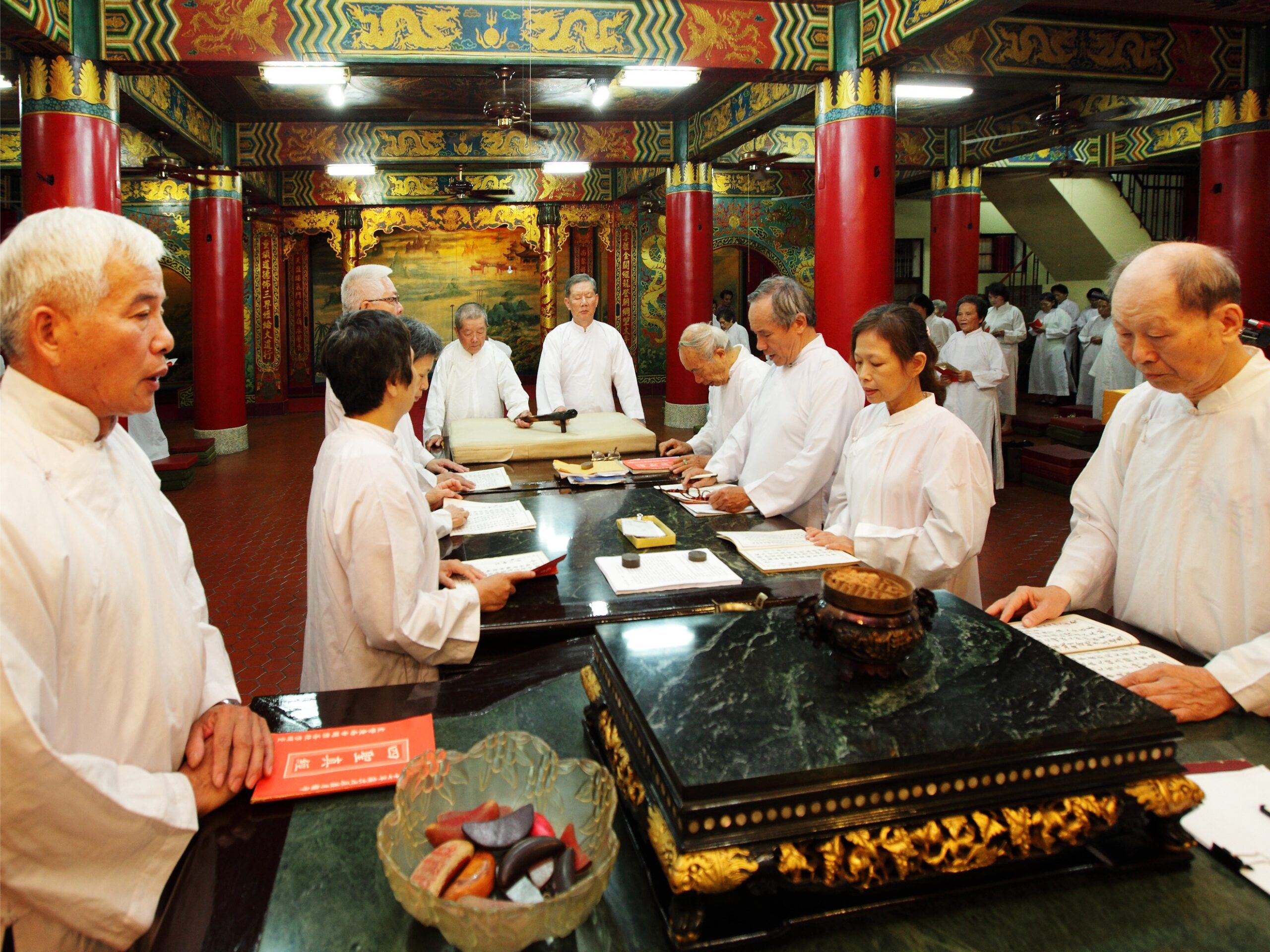
扶鸞儀式
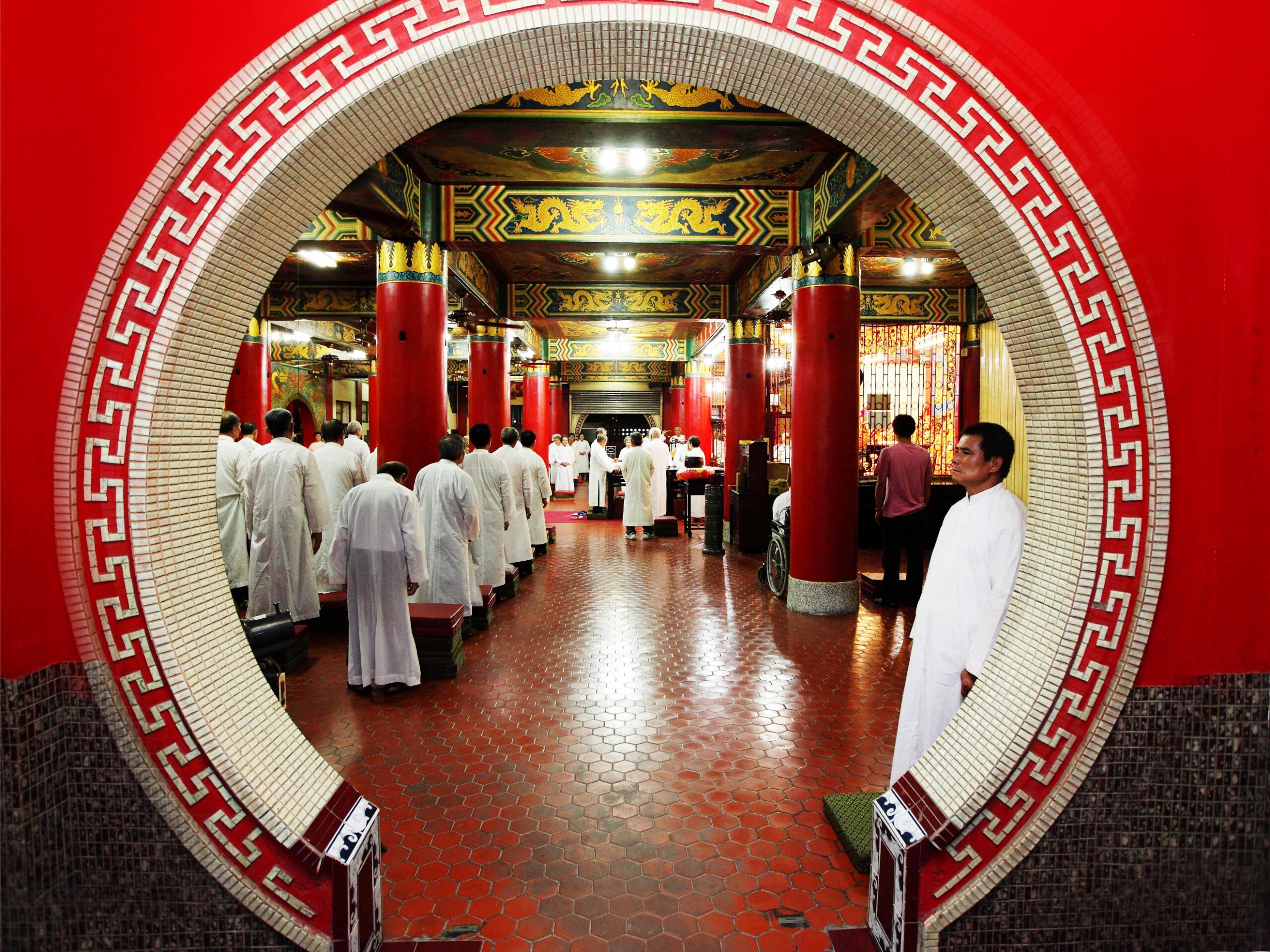
啟明堂扶鸞
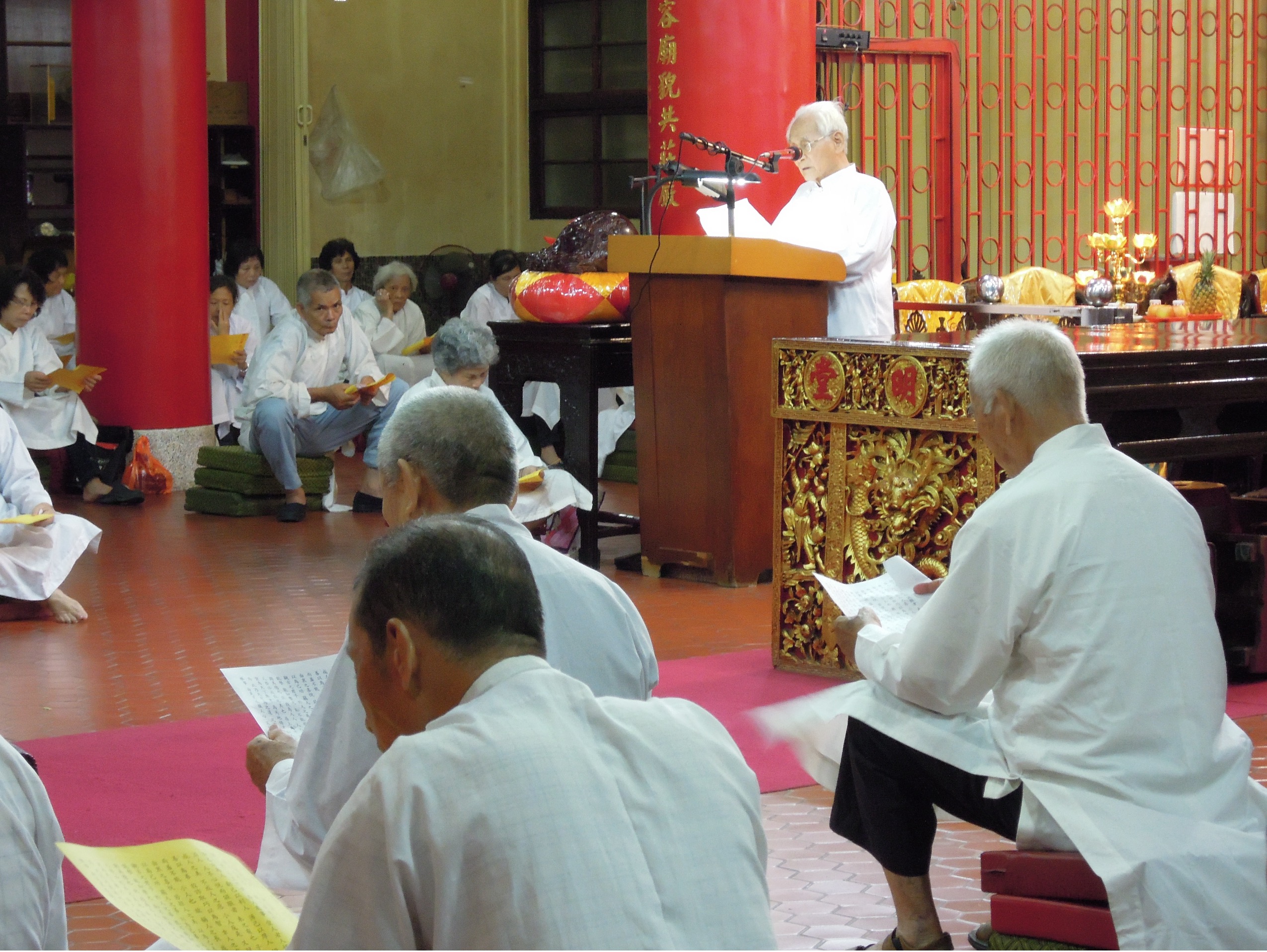
扶鸞誦經儀式
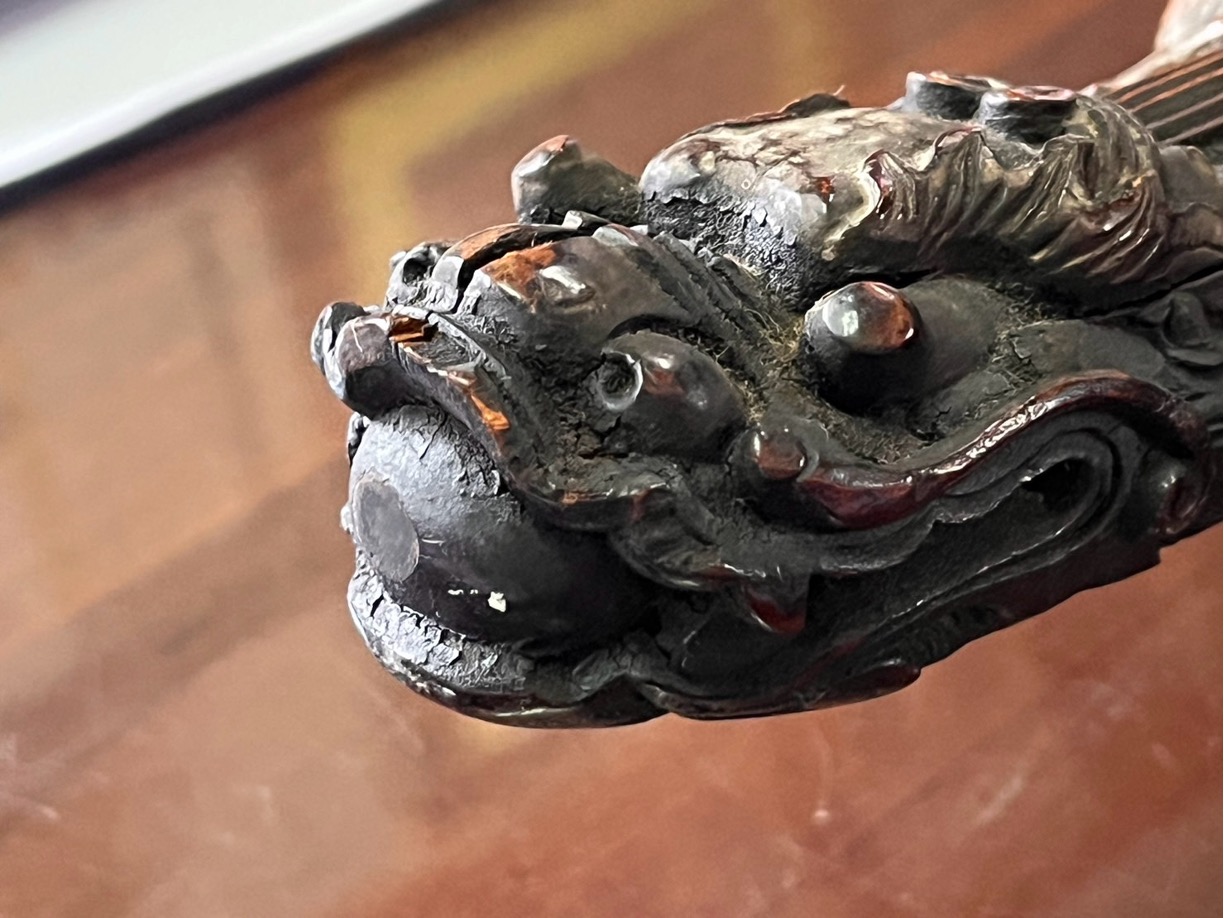
鸞筆桃枝龍頭鳥身
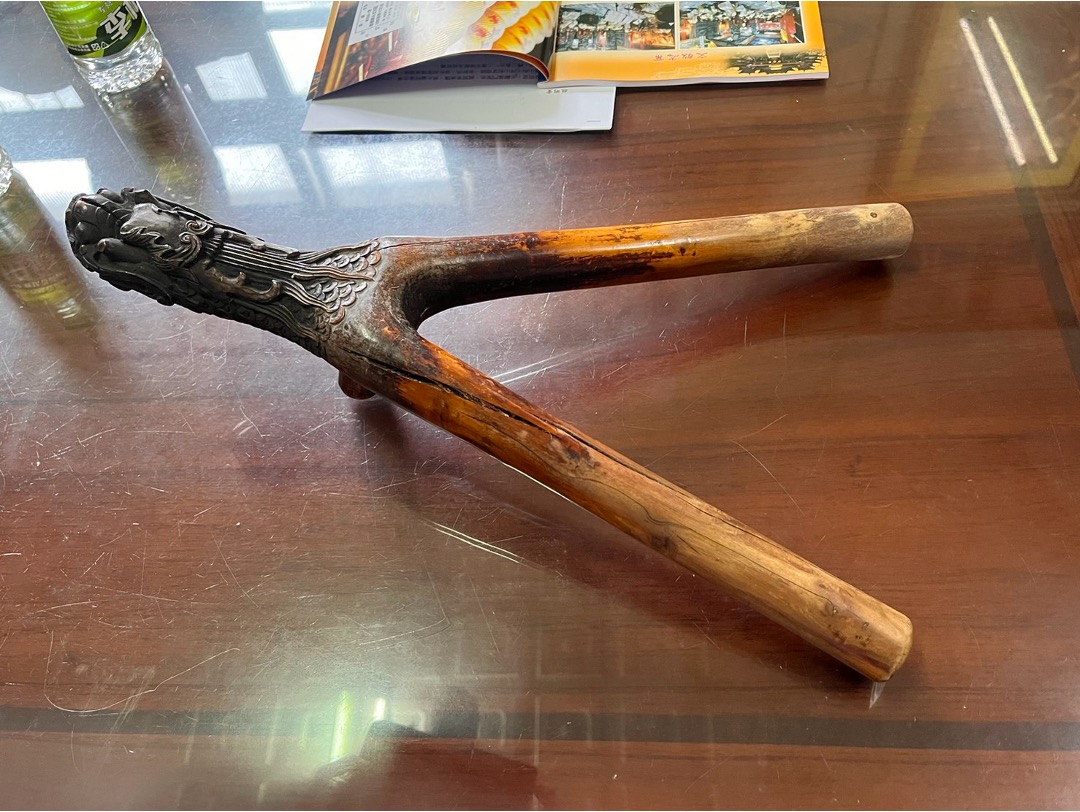
鸞筆桃枝龍頭鳥身雙翼 消災祈福
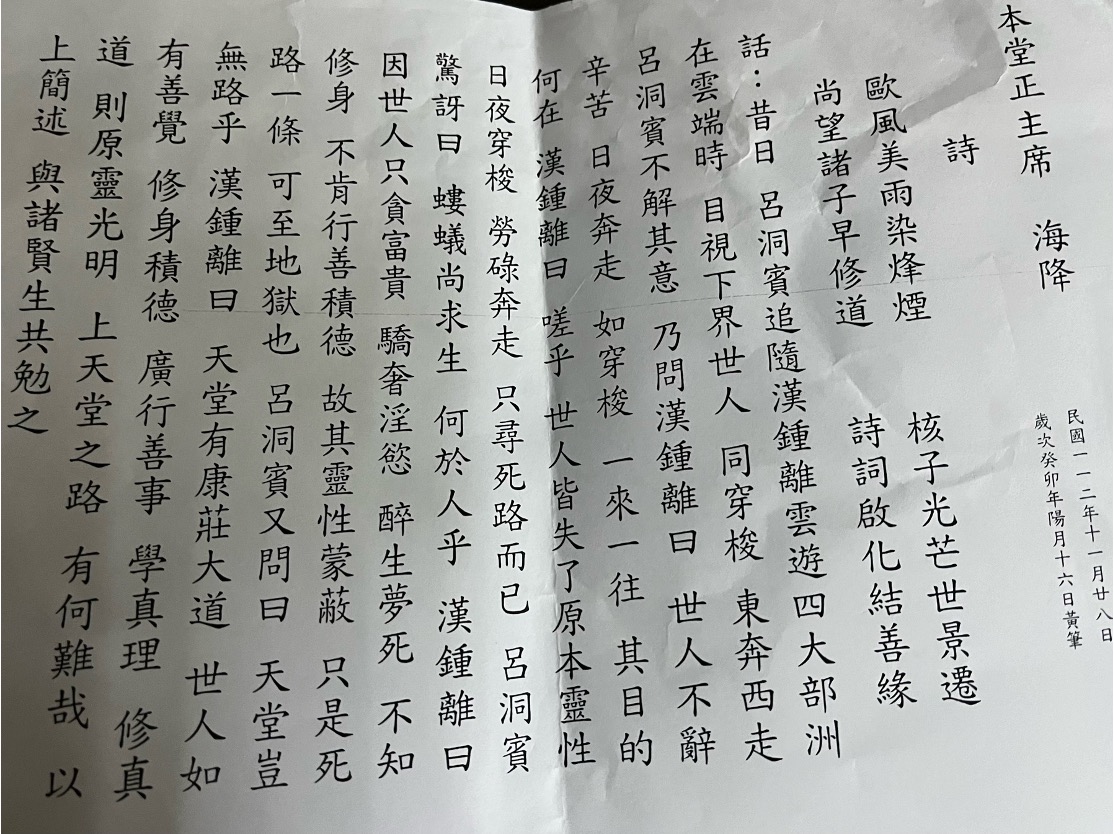
宣化詩
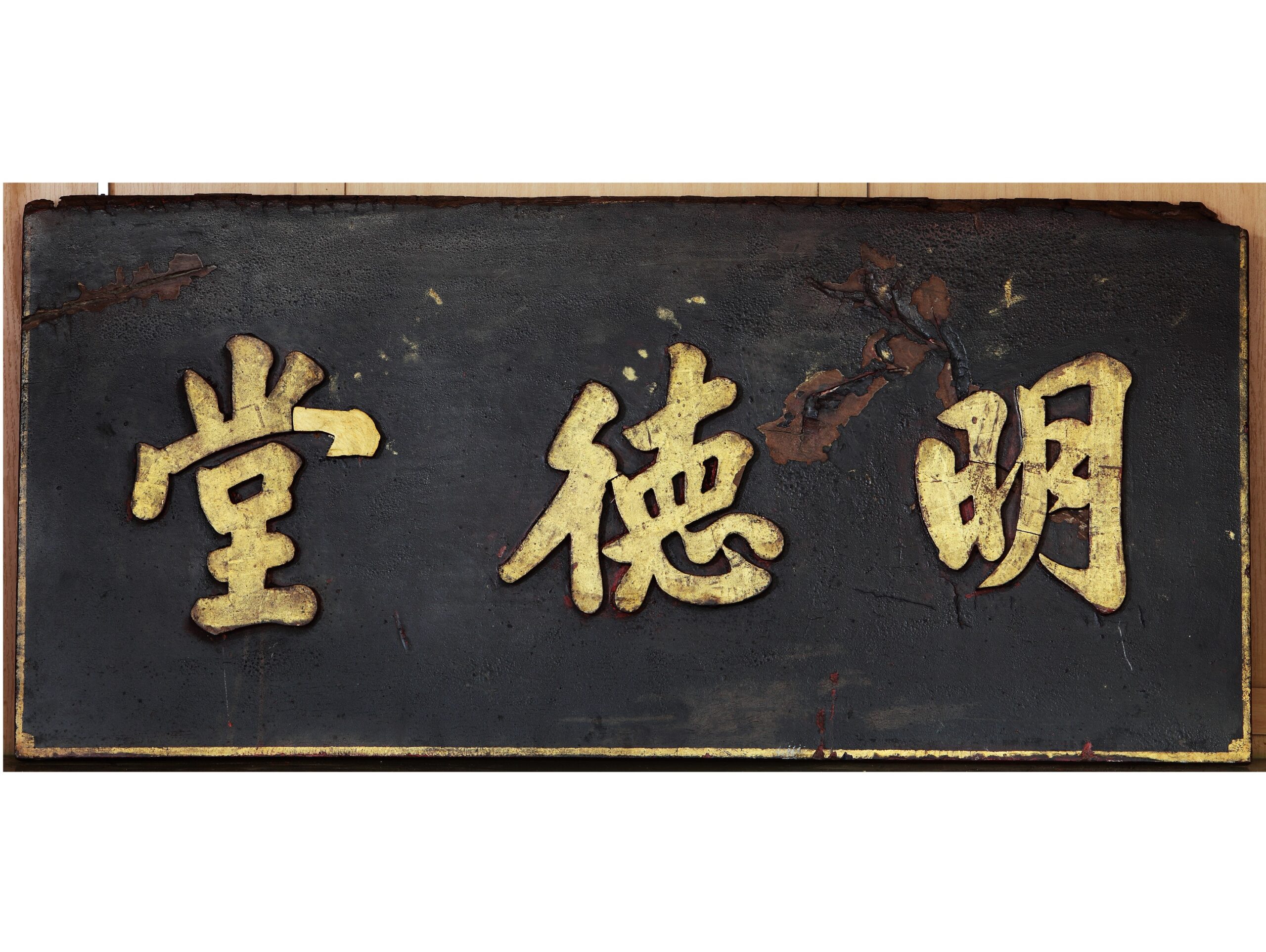
啟明堂剛成立時堂號匾額
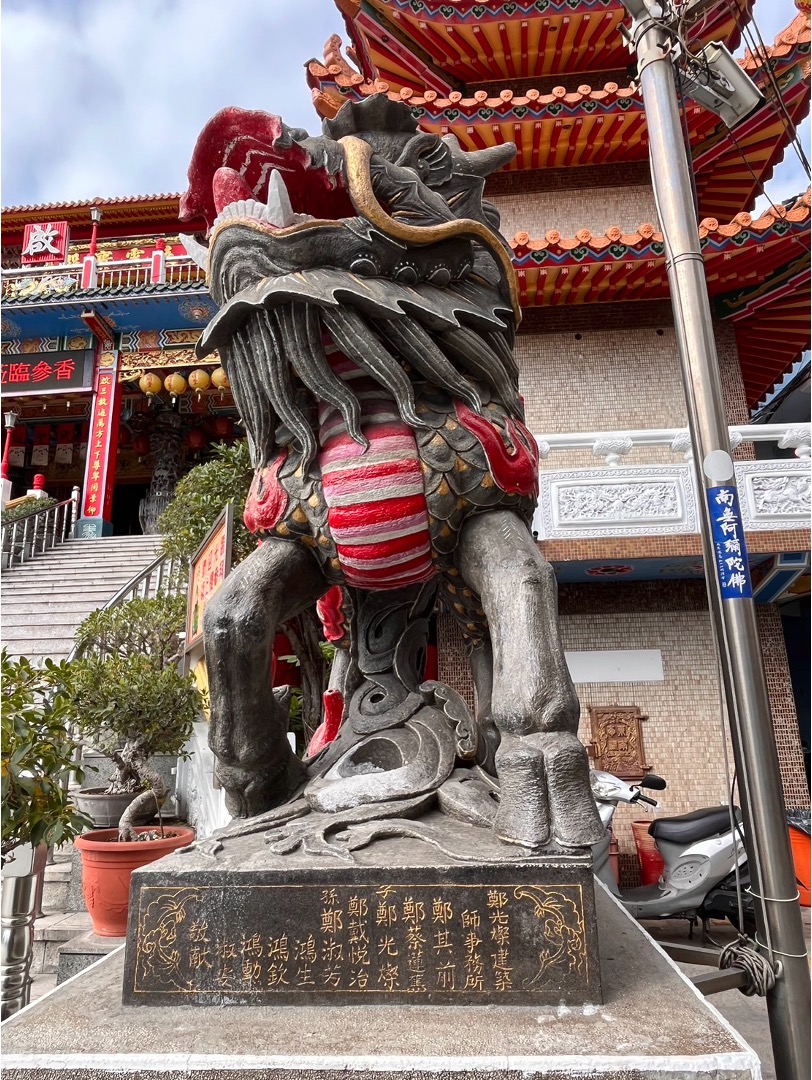
建築師參與啟明堂與慈濟宮興建工程並作供養
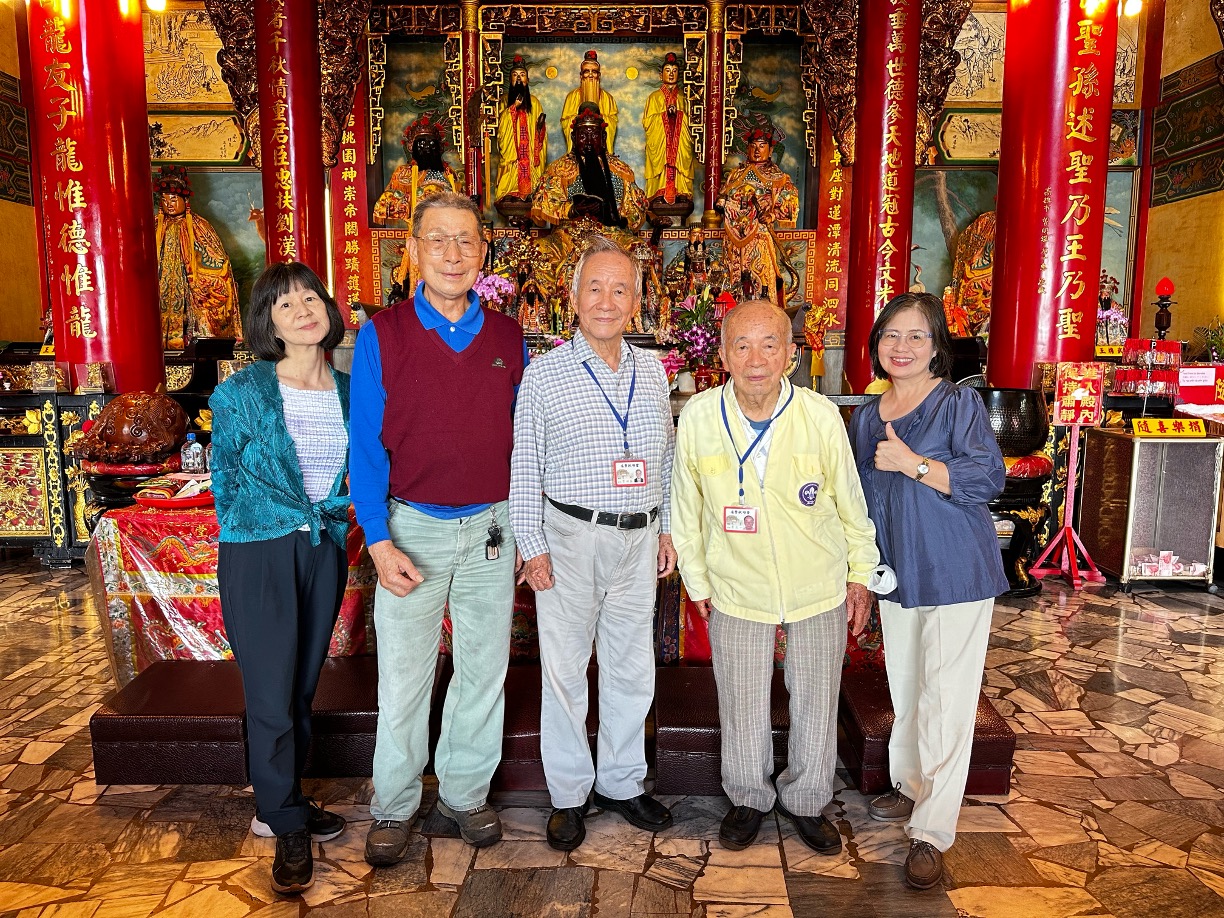
啟明堂合照 右一採訪者蔡碩玲 右二曾宏一文署 右三曾坤泰堂主 左二樂善社蔡松峻社長 左一採訪者蔡芳玲
